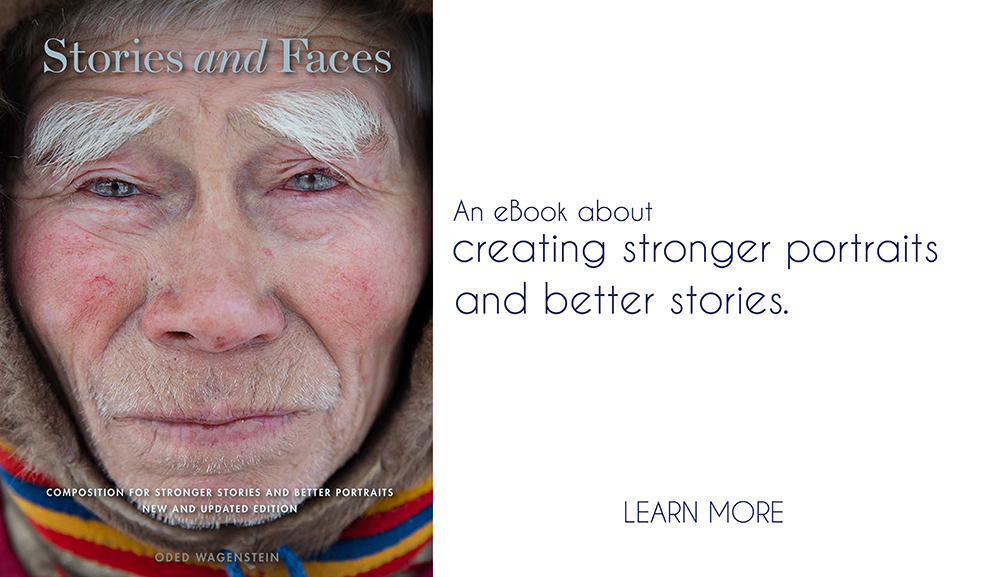“One on One With the Masters of Photography”
For this post of “One on One With the Masters of Photography” series, it’s my pleasure to interview one of the most influential photographers of our time, best known for his iconic image of the “Afghan girl”- Photojournalist, Steve McCurry. His award-winning images have been a source of inspiration for photographers worldwide, with the iconic image of the “Afghan girl” and much more, which show his unique use of color, light, and composition.
Afghan Girl, Pakistan- Steve McCurry
Interview with Steve McCurry:
Steve, thanks once again for taking part in this interview.
Ansel Adams wrote about Pre-Visualization, and “seeing” the final image in your mind before the actual photo is taken. Henri Cartier-Bresson spoke about the importance of catching the quick and “decisive moment.” In your work, do you usually find yourself planning the frame more or responding to it?
I’ve definitely developed the ability to look at a scene and identify the quality of light, and how sections of a view will fit together in the frame of a photograph. Photographers like Cartier-Bresson would only use one or two lenses and work mostly in available light. I think the simplicity of this approach creates a timeless quality. To focus overly on the technical approach detracts from the power of the image in its own right.
Jodhpur, India- Steve McCurry
What do you think are the core elements of a “strong” image?
What makes a powerful image is the confluence of several key elements, such as composition, design, and emotion, in a pristine moment that reveals a deeper truth.
So how do you feel when encountering one?
I seldom have a plan, and I feel that the times that have been the most fun and productive have been those where I literally just get up and wander around, looking for situations and subjects to shoot. It’s amazing how things just magically happen and pictures ‘reveal themselves’.
To elaborate on the previous question, I’d love to discuss the importance of the “story” in the image, especially in your portraits. Do the type of stories or emotions you want, affect your work in the field (color choice, composition, background, time of day to shoot, etc.)?
We connect with one another via eye contact, and there is a real power in that shared moment of attention, in which you can occasionally catch a glimpse of what it must be like to be in another’s shoes. I think this is one of the most powerful things about a photograph. A picture of a guy in the street in New Guinea, with a bone through his nose is interesting to look at. But for it to be a really good photograph; it has to communicate something about what it is like to live with a bone through your nose. It is a question of the moment to reveal something interesting and profound about the human condition.
So do you think there is a difference in creating a “story” in a solo image, compared to a series, as part of a photographic assignment for a magazine, for example?
What is important to my work is the individual picture. I photograph stories on assignment, and of course, they have to be put together coherently. But what matters most is that each picture stands on its own, with its own place and feeling.
 Jodhpur, India- Steve McCurry
Jodhpur, India- Steve McCurry
Of course, every portrait is a “new story” and a whole new challenge, but can you share some workflow you’ve mastered over the years in your people photography? For example, how do you choose between a close-up shot and an environmental portrait, when you encounter a striking face?
You need to find a technique that you enjoy. There needs to be an element of pleasure, and you have to be photographing in a way that allows you to find your comfort zone. I usually work in a fairly classical way, trying to avoid drawing too much attention to my technique while allowing the story in the picture to speak for itself.
With photographing, and assessing different situations, I think it’s just a question of experience. Judging, and evaluating the situation moment to moment, and just trying to make a picture that’s representative, that’s true, and that’s ethically honest.
You once said that you gained yourself the nickname “Prince of Darkness,” because of your preference to shoot at the light of sunrise. Catching the light of the “Golden Hours” is definitely dominant in your outstanding portfolio. But how do you manage to work for the rest of the day, dealing with the harsh, mid-day light?
I always get out early, not particularly because I am looking for early morning light or late afternoon light. I just like to get out and walk around the day from start to finish. But I do think my work often leads to the dark side of lighting. When I’m working on a project, I like to be out and shooting at first light, when there is that rich, warm light. When walking down a street, I will always be on the shady side of the road. I’ll usually take a break, or go inside, during the brightest part of midday, then go back out to work more until I lose the last of the daylight. On bright and sunny days, I tend to work indoors.
Today, when every corner of the globe has been photographed, can one still create an original image, especially when photographing at your local town or city? How do you keep your eyes and mind sharp to help you look for that unique image?
In time, you start to develop your own way of seeing and then it’s your own personality coming through the camera. We are all unique individuals; we all have our personalities. We all have our own voice and our own style. If you look at the photographers whose work we admire, they’ve found a particular place or a subject, dug deep into it, and carved out something that’ll become special.
These days, you are a successful lecturer and lead photography expeditions worldwide. Can you tell us a bit about your photography workshops and how can people sign up?
I really enjoy running expeditions with photography enthusiasts of all types. The participants vary from upcoming professionals to advanced amateurs who take their work very seriously. Sometimes they are people trying to get into the field professionally, or just someone who finds photography as a compliment to what they do in the rest of their lives.
 Rajasthan, India- Steve McCurry
Rajasthan, India- Steve McCurry
I’d love to finish the interview with some quick questions:
– So, Do you remember what you wanted to be when you grew up?
I wanted to be a filmmaker.
– If you had to choose a different field other than your own, what would it be?
I would probably go into film, which I studied in college.
– What would you consider a successful day for you?
Any day that I am out observing something new and exploring the world is a success. If I manage to make a good picture, it’s even better.
– What kind of equipment do you use today (camera and most useful lenses)?
These days I shoot primarily with a Nikon DSLR and a 24-70mm zoom lens. For certain jobs, I will shoot with my medium format digital Hasselblad.
– It’s not easy to summarize your entire career in one sentence but can you share one core piece advice with me, something that helped you to become the photographer you are today?
Be prepared to work really hard. Unless you are absolutely obsessed with it and have a true passion for your work, it’s not going to happen for you.
Steve Mccurry biography:
Steve McCurry was born on February 24, 1950, in. Philadelphia. He started traveling at age 19 and, although he always wanted to be a filmmaker, he fell in love with still photography. After getting a degree in theater arts, He started working for the “Today’s Post” in Pennsylvania, doing local photography assignments. After two years on the job, the spirit of adventure called him and he left for India to become a freelance photographer. A country he would visit more than 70 times. In his biography, he wrote: I stayed at some of the world’s worst hotels and wished I had a nickel for every time I was sick”. But his enthusiastic approach paid off.
His professional career took off when at age 29, he crossed the border from Pakistan to Afghanistan, dressed as a native. His photos of the Soviet war in Afghanistan, which he took at great personal risk, were among the first images to come out of that war zone. Steve continued to cover areas of conflict around the world.
He took his famous image in 1984, in a refugee camp near Peshawar, Pakistan. The image of a young Afghan girl named Sharbat Gula. He was using a Nikon FM2 camera and with a Nikkor 105mm F2.5 lens. The image was published on the cover of National Geographic’s June 1985 issue. Even today, it’s considered to be the most recognized photograph in the world.
Today, Steve is a regular contributor to magazines around the world, a member of the prestigious photo agency – Magnum. He also holds worldwide expeditions and lectures.
For more of Steve’s great images, visit his website or follow his blog.
–




The shots are so inspiring and wonderful. One can visualise the people in the different situations. I was lucky to have had the opportunity to see them in Dublin a few years ago.